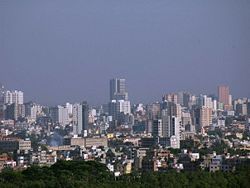
Bird's view of Dhaka city
The capital of Bangladesh
is Dhaka with its exciting history and rich culture Known the world over
as the city of mosques and muslin. It has attracted travellers from far
and near through ages. It has history dating back to earliest time. But
the exact date of its foundation is not known. However, according to recorded
history it was founded in 1608 A.D. as the seat of the imperial Mughal
Viceroy of Bengal. Dhaka as the capital of Bangladesh has grown into a
busy city of about seven million people with an area of about 815 sq.
km Having a happy blending of old and new architectural trends, Dhaka
has been developing fast as a modern city and is throbbing with activities
in all spheres of life. It is the centre of industrial, commercial, cultural,
educational and political activities for Bangladesh. At Tongi Teigaon,
Demra, Pagla, Kanchpur the industrial establishments turn-out daily necessities.
Motijheel is the main commercial area of the city. Dhaka's major waterfront
Sadarghat is on the bank of the river Buriganga and is crowded with all
kinds of rivercraft, yatchs, country boats, motor launches, paddle - steamers,
fishermen's boats all bustling with activity.Colourful rickshaws (tricycle)
on the city streets are common attractions for the visitors.Some of the
outstanding tourist attractions of Dhaka are:
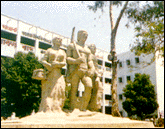
Aparajeo Bangla, Dhaka University
Area : 815.85 Sq. kilometres (approx.)
Population : Seven million (approx.)
Climate : Tropical, with heavy rainfall and bright sunshine in the monsoon and warm for the greater part of the year. The winter months, from November to March, are however, most likeable, cool and pleasant.
Temperature: Max. Min. summer 36.7°C 21.1°c Winter 31.7°C 10.5°c
Rainfall : 2540 mm annually.
Humidity : 80 percent (approx.)
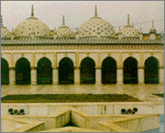
Star Mosque,Dhaka
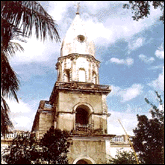
Armenian Church, Dhaka
Churches : Armenian Church (1781 A.D.) St.Mary's Cathedral at Ramna, Church of Bangladesh or former Holy Rosary Church (1677 A.D.) at Teigaon
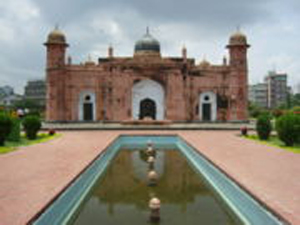
Lalbagh Font, Dhaka
Lalbagh
Fort : It was built in 1678
A.D. by Prince Mohammad Azam, son of Mughal emperor Aurangazeb. The fort
was the scene of bloody battle during the first war of independence (1857)
when 260 sepoys stationed here backed by the people revolted against British
forces. Outstanding among the monuments of the Lelbagh are the tomb of
Pari Bibi (Fairy lady), Lalbagh Mosque, Audience Hall and Hammam of Nawab
Shaista Khan now housing a museum. National Memorial : Located at Savar,
35, km. from Dhaka city. The memorial designed by architect Moinul Hossein,
is dedicated to the sacred memory of the millions of unknown martyrs of
the 1971 war of liberation.
1857 Memorial : (Bahadur Shah Park) Built
to commemorate the martyrs of the first liberation war (1857-59) against
British rule. It was here that the revolting sepoys and their civil compatriots
mere publicly hanged
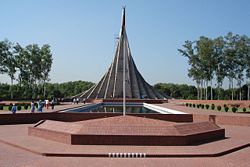
The National Martyrs' Monument at Savar
Savar
is an Upazila of Dhaka District in the Division of Dhaka, Bangladesh.
It is located at a distance of about 24 km to the northwest of Dhaka city.
Savar is mostly famous for Jatiyo Smriti Soudho, the National Monument
for the Martyrs of the Liberation War of Bangladesh.
Savar is located at 23.8583° N 90.2667° E . It has 66956 units of house
hold and total area 280.13 km². It is bounded by kaliakair and gazipur
sadar upazilas on the north, keraniganj upazila on the south, mirpur,
mohammadpur, pallabi and uttara thanas of Dhaka City Corporation on the
east, dhamrai and singair upazilas on the west. The land of the upazila
is composed of alluvium soil of the Pleistocene period. The height of
the land gradually increases from the east to the west. The southern part
of the upazila is composed of the alluvium soil of the Bangshi and Dhalashwari
rivers. Main rivers are Bangshi, Turag, Buriganga and Karnatali. The total
cultivable land measures 16745.71 hectares, in addition to fallow land
of 10551.18 hectares.
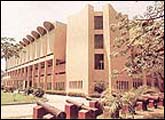
National Museum
Mukti
Juddha Museum :
Situatad at Segun Bagich a area of the city contains rare photographs
of Liberation war and items used by the freedom fighters during the period.
National Museum : Centrally located, the
museum contains a large number of interesting collections including sculptures
and paintings of the Hindu, Buddhist and Muslim periods.
Science Museum : Located at Agargaon, the
museum is a modern learning Centre related to the latest scientific discoveries.

Ahsan Manzil, Dhaka
Mausoleum of National leaders : Located at the south western corner of Suhrawardy Uddyan it is the eternal resting piece of three great national leaders, Sher-e-Bangla A,K. Fazlull Haque, Hossain Shahid Suhrawardy and Khawja Nazimuddin.
Banga Bhaban : Tourists can have a look (outside view only) of Banga Bhaban, the official residence of the president. Bara Katra: This building of grand scale, now almost in ruins, is one of the most important remains of the Mughal peirod in Dhaka. If is of the type of 'Katra' (enclosed quadrangle building) with a gigantic frontage towards the river Buriganga. It was built by Abul Qasim, Dewan of Shah Shuja in 1644 A.D. It served the purpose of a caravanserai.
Chota Katra: Situated about 200 yards east of Bara Katra, Chota Katra was built in 1663 A.D. by Nawab Shaista Khan. This is of similar plan and purpose as the Bara Katra but is smaller in size.
National Art Gallery : Situated in the Shilpakala Academy premises this has a representative collection of folk-art and painting by artists of Bangladesh.
National Assembly Complex : Sangsad Bhaban, the National Assembly Complex in Sher-e-Bangla Nagar designed by the famous architect Luis 1. Kahn has distinctive architectural features.
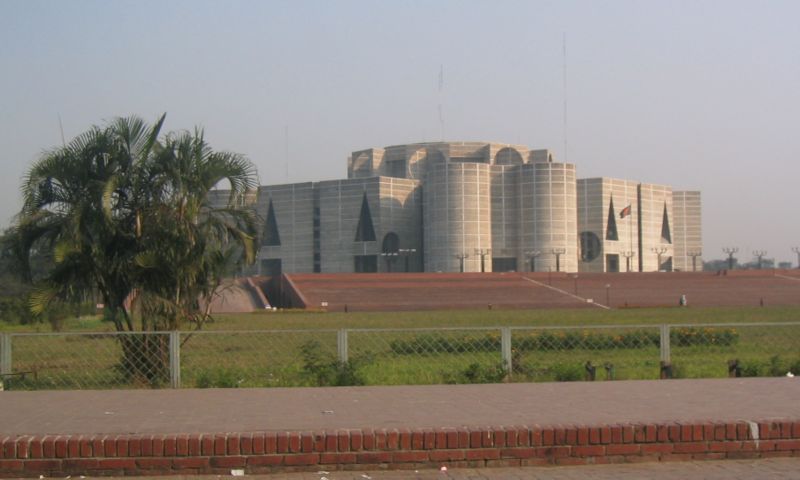
National Parlimament Building
Suhrawardy
Uddyan (Garden) : At a stone's
thrown distance from Dhaka Sheraton Hotel is the Suhrawardy Uddyan, formerly
known as the Race Course, the popular park of the city. It is here that
the clarioncall for independence of Bangladesh was given by Father of
the Nation Bangabandhu Sheikh Mujibur Rahman on the 7th March 1971 and
curiously enough it is again here that the commander of the occupation
forces surrendered on the 16th December 1971.
Baldha Garden : Baldha Garden has collection
of rare plants and flowers.
Ramna Garden : Ramna park is a vast stretch
of green ground surrounded by a serpentine lake.
Zoological Garden : Called Mirpur Zoo, it
is situated at Mirpur 16 km NW of Dhaka, on 230 acres of land.
Botonical Garden: Built over an area of 205
acres of land at Mirpur just east of the Zoo. Objective of garden-botanical
education, research, preservation of plants and some recreation. National
Park : Situated at Rajendrapur, 40 km due north of Dhaka, within Joydevpur
Police Station in the magnificent Bhawal region of Dhaka-Trishal-Mymensingh
highway, this is a vast (1,600 acres) national recreational forest, ideal
for hose who love nature.
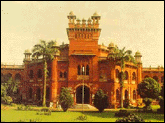
Curzon Hall, Dhaka University
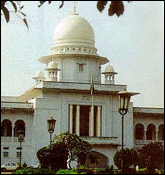
High Court Building
Dhaka Zoo : Popularly known as Mirpur Zoo. Colourful and attractive collections of different local and foreign species of animals and birds including the majestic Royal Bengal Tiger are available here.
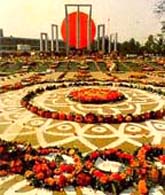
Central Shahid Minar, Dhaka
Central
Shahid Minar : Symbol of Bengali
nationalism. This monument was built to commemorate the martyrs of the
historic Language movement of 1952. Hundreds and thousands of people with
floral wreaths and bouquet gather on 21 February every year to pay respect
in a solemn atmosphere. Celebrations begin at zero hour of midnight.
Buddhist monastery : Kamalapur Buddhist Monastery.
National Poet's Graveyard : Revolutionary poet Kazi Nazrul Islam died on the 29 August 1978 and was buried here. The graveyard is adjacent to the Dhaka University Mosque.
Institute of Arts and Crafts : Situated in the picturesque surroundings of Shahbagh the Institute of Arts and Crafts has a representative collection of folk-art and paintings by artists of Bangladesh.
Buddhist monastery : Kamalapur Buddhist Monastery.
National Poet's Graveyard : Revolutionary poet Kazi Nazrul Islam died on the 29 August 1978 and was buried here. The graveyard is adjacent to the Dhaka University Mosque.
Institute of Arts and Crafts : Situated in the picturesque surroundings of Shahbagh the Institute of Arts and Crafts has a representative collection of folk-art and paintings by artists of Bangladesh.
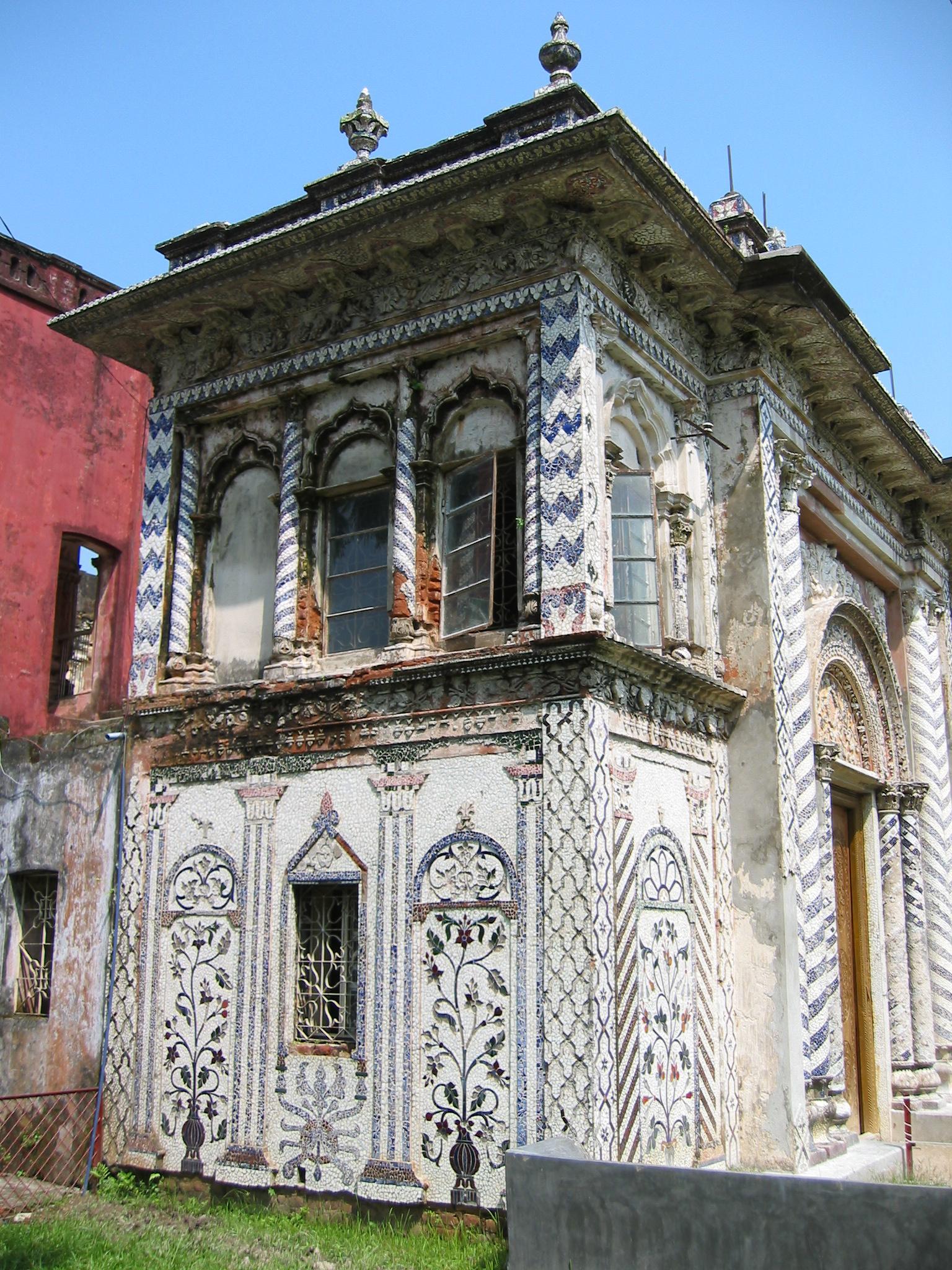
Shonargaon
Sightseeing
Tours : Bangladesh Parjatan Corporation runs
conducted sightseeing tours from its Tourist Information Centre at Dhaka
Sheraton Hotel. The duration of the Dhaka City sightseeing tours is three
hours approximately. The Corporation operates a number of other interesting
sightseeing tours around the Dhaka City (Ph: 8119192). For the transit
passengers the Corporation also runs special city sightseeing tours from
from the Tourist Information Centre, Zia International Airport,
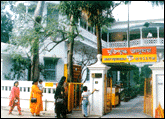
Muktijuddha Museum, Dhaka
Bangabandhu
Memorial Museum : The residence of the
father of the nation Bangabandhu Sheikh Mujibur Rahman at Dhanmondi Residential
Area has been turned into a musuem. it contains rare collection of personal
effects and photographs of his lifetime.
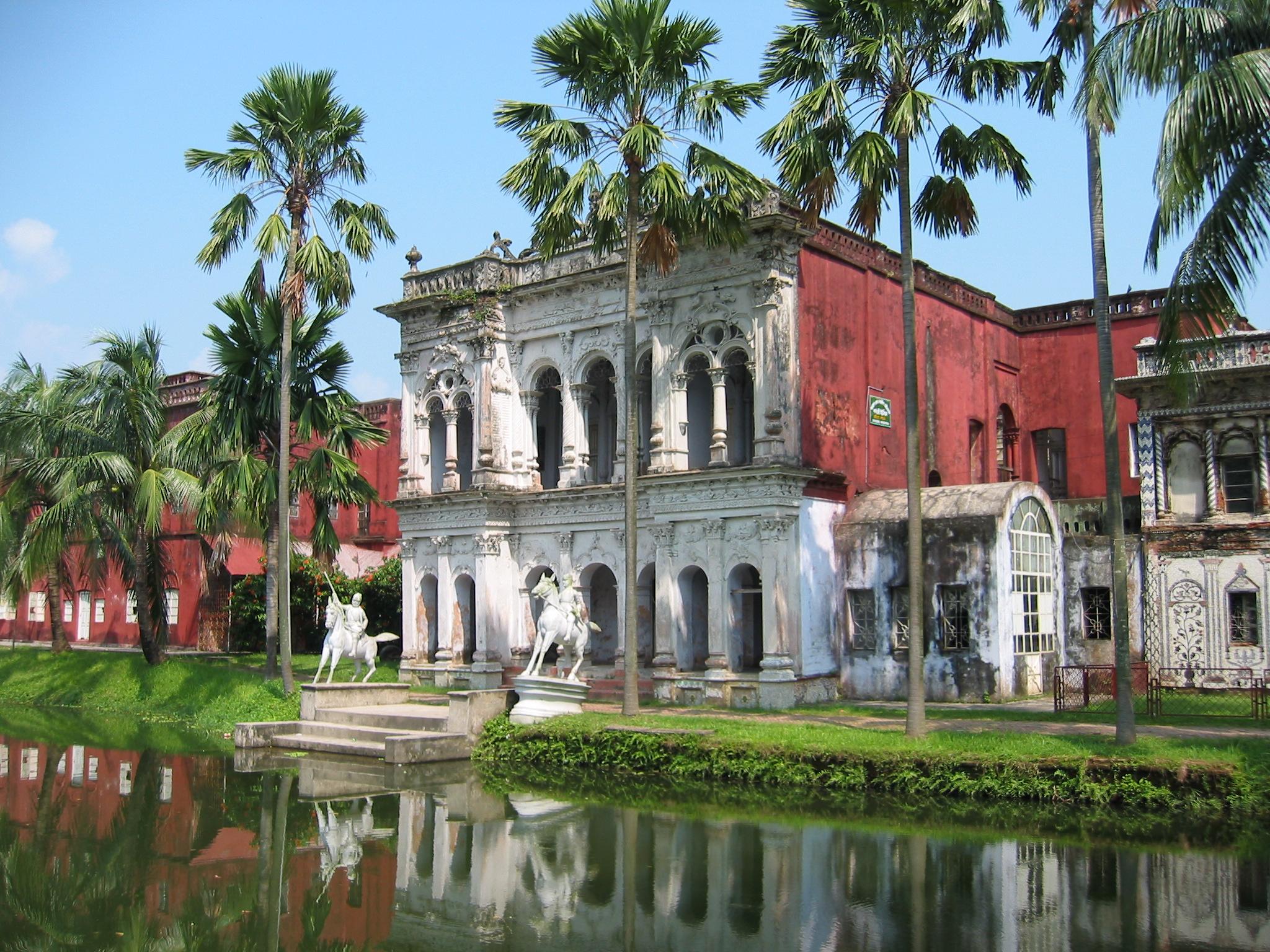
Sonargaon
Sonargaon
: About 29 km. from Dhaka. Sonargaon
is one of the oldest capitals of Bangal. A Folk Arts and Crafts Museum
has been established here. Other attractions in and around Dhaka include
the Institute of Arts and Crafts with its representative collection of
folk art and paintings, handicraft shops. Aparajeya Bangla monument, picnic
spots at Chandra and Salna, industrial estates of Tongi, Narayanganj,
Demara, Tejgaon, cruising by country boat in the nearby river or a visit
to a village to see jute cultivation, weaving and pottery making. Last
but not the least travel by a horse driven cart or rickshaw along busy
Dhaka streets is a rewarding experience.
Picnic Spots : There are good picnic spots in the area around Savar and Mirzapur. Other beauty spots connected by road with Dhaka include Joydevpur, Sripur, Madhupur, Rajendrapur National Park, Chandra and Salna, all of which have rest-houses that can be used by tourists on request to the Forest Department. Bangaldesh Parjatan Corporation owns two picnic spots with Bunglows at Chandra and Salna which can also be hired by tourists.
Picnic Spots : There are good picnic spots in the area around Savar and Mirzapur. Other beauty spots connected by road with Dhaka include Joydevpur, Sripur, Madhupur, Rajendrapur National Park, Chandra and Salna, all of which have rest-houses that can be used by tourists on request to the Forest Department. Bangaldesh Parjatan Corporation owns two picnic spots with Bunglows at Chandra and Salna which can also be hired by tourists.